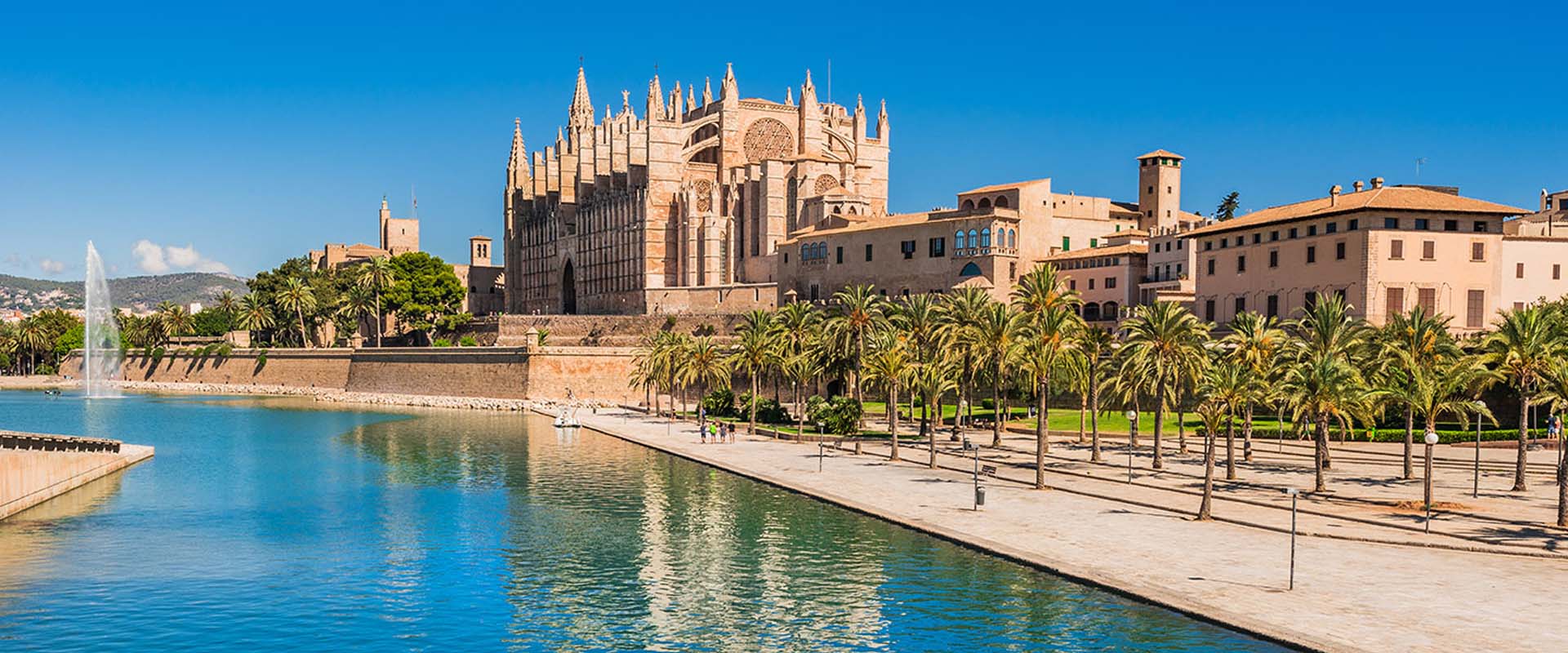
Palma
The capital of the island of Majorca is located in the bay of the same name and enjoys an excellent climate all year round (with an average annual temperature of 17.9° C). Known for its sun and beach tourism, it also has an attractive historic quarter. The Cathedral, the Almudaina Palace, the Lonja fish market and Plaza Mayor are some of the sites that are well worth visiting. The most beautiful monuments are surrounded by fishing boats, pine forests and palm trees. The landscape of the island is full of coves, beaches and cliffs on the coast, and inland you will find typical towns and mountain ranges up to 1,500 metres high. The variety of the landscape and culture invites visitors to explore every corner of Majorca and to find out more about the gastronomy of the island.
The city of Palma was once coveted by Romans, Moors and Berber pirates. It was King Jaume I who put an end to the Moorish reign in the Mediterranean island (13th century), and who built the most important constructions in Palma.The old quarter of the city stands inside the 18th-century walls which served to repel pirates and corsairs. Visitors will find old churches, palaces and noble mansions with charming courtyards (there are over 40 dotted around the centre of Palma).Sa SeuThe Cathedral of Palma (Sa Seu) is built in a spectacular location on the bay and next to the fishing harbour. It is an elegant Gothic cathedral, and it is harmoniously built, despite being so large. It was commissioned by King Jaume I, to be built on the site of the old Mayurqa Mosque. The cathedral has very high vaults; although what surprises the most is an impressive rose window and the peculiar wrought iron baldaquin, by the Catalan architect Antonio Gaudí.Opposite Sa Seu is the Almudaina Palace. The former Moorish palace and residence of the monarchs of Majorca is currently used as a museum. Its appearance as a Moorish fortress contrasts with the rich ornamentation of the flamboyant Gothic Chapel of Santa Ana that can be found inside.Situated near the Paseo Sagrera is Sa Llotja. This old fish market, which is used for exhibitions today, is one of the best examples of civil Gothic architecture in Spain. Its Solomonic columns and cross vaults are quite unusual for a secular construction. Together with the Lonja, we find the Consolat (Consulate) de Mar where the regional government has its headquarters, under Renaissance arches.

